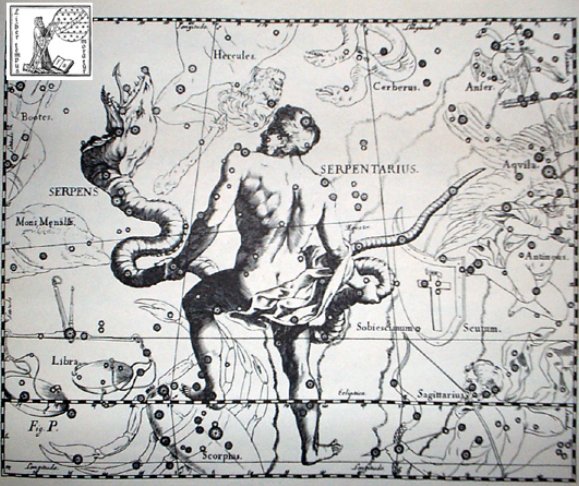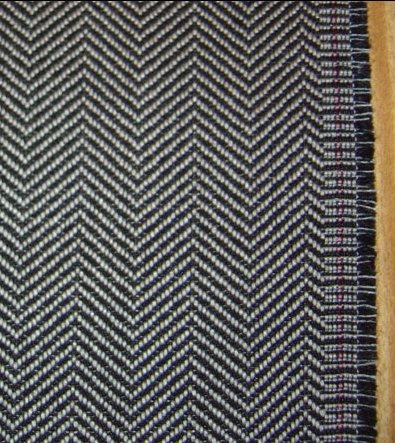The change from 'Sea' to 'Land' seems also to be illustrated as an event which coincided with the heliacal rising of the pair Hyadum I and Hyadum II, when the reader of the G tablet had to turn from its back side to its front side. While reading the C text Metoro appears to have made a special pause before he continued with Ca9-16:
The standing figure (i.e. 'on Land') in Ca9-20 appears to be a more grown up variant of the figure who 3 days earlier possibly not yet had arrived on Terra Firma. And the 'entrance gate' may have been defined from Yed Prior (δ Ophiuchi) and Yed Posterior (ε Ophiuchi) rather than from the pair of Hyadum stars. Hevelius seems to have put the Yed 'door' at the throat of Serpens:
One could guess that Metoro's koia ku honui could mean a team is together (koia) behaving like 'turtles' ... It grew light on the fourth day, and they all got up (together). They climbed down, went on, and arrived at the bay. They hurried, went into the water, and reached the islet (off the shore). The wave began to move, and they all rode the wave (literally, 'they turned their lower body into the position of a turtle') ... but there is no such support in my word list:
The person up on dry land (Ca9-20) has what looks like herringbones in his ears.
I guess it means Night rules, and the front side has still to come. We can compare with the tresses on the back side of the head of Pachamama (Mother Earth):
The basic ingredients in the rongorongo texts are evidently structures, numbers, and figures (in that order). The 'zero' hole in Ca9-17 should therefore first of all be compared with the similar such hole 120 days earlier:
The star names Bright Fire and Peacock are in harmony with each other, suggesting the new presence of Sun. And 125 = 5 * 5 * 5. Al Naam 5 (3 days earlier) could allude to the heliacal rising of Antares (in RA day 249). However, to make the picture more complete we should begin already with Sun like a bird head on fire:
From RA day 120 (July 19) to Bright Fire there are 5 days, and therefore 5 * 5 * 5 to November 21 (325). 13 * 25 = 325. The maro 'straw' at left in Ca9-17 could mean old Sun is in the past. Hyadum I rose heliacally in RA day 63. May 23 (Ca9-17) can be counted as 52 * 3 = 156 (= 12 * 13 = the last RA day before the Moon calendar). The Sun disc in Ca5-20 has in Ca9-17 changed its position to inside, no longer visible. But in the night sky the rainy Hyades could be seen. And the peculiar 'Moon crescents' under the arms of the Rogo figure could indicate a process of warming up: ... One day the Old-Spider found a giant clam, took it up, and tried to find if this object had any opening, but could find none. She tapped on it, and as it sounded hollow, she decided it was empty. By repeating a charm, she opened the two shells and slipped inside. She could see nothing, because the sun and the moon did not then exist; and then, she could not stand up because there was not enough room in the shellfish. Constantly hunting about she at last found a snail. To endow it with power she placed it under her arm, lay down and slept for three days ...
| ||||||||||||||||||||||||||||||||||||||||||||||||||||||||||||||||||||||||||||||||||||||||||||||||||||||||||||||||||||||||||









